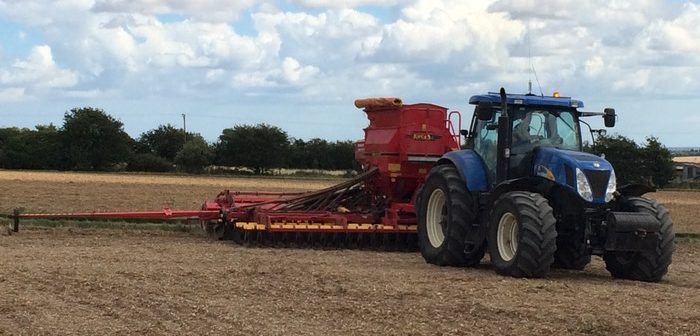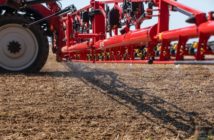For many the option of establishing catch and cover crops is front of mind with harvest well underway. However, the fundamental issue at the moment is that no crop will grow without moisture, and in some areas that is in seriously short supply, says Hutchinsons technical manager Dick Neale.
“As we are aware, weather can change rapidly with hot dry periods often coming to an abrupt end, however despite a small amount of rain being forecast into the beginning of August, it is not predicted to significantly change the dry status of soils sufficiently to sustain good growth.”
“Establishment of catch crops, cover crops or oilseed rape is therefore likely to be extremely difficult currently, and the use of catch crops after forage rye, vining peas and winter barley are also unlikely to be successful for now.”
Lack of soil moisture
Without a doubt the current lack of soil moisture overrides all other factors in respect of decisions to be made on species mix or drill date, says Mr Neale.
“Where soil moisture levels are higher, say further north or in the west, it is key to plan cover or catch crops with the desired outcomes in mind.”
He points out catch and cover cropping offers up multiple values but understanding how the positive values of that crop are optimised while minimising any negative value is key to a successful crop.
“Cover cropping is not new but in the rush to sell options or ‘keep it cheap’ at farm level, it is important not to overlook some fundamental realities. Think about the following crop, intended drilling date, available equipment (topper) or livestock (grazing) and drill type.”
Consider carefully the choice of mix or ratio of species in the mix based on soil management needs, aggregation, moisture management, surface structuring, weed suppression, and nutrient fixation,” he adds.
Multiple species
“For example multiple species are useful to ensure reliable establishment, ensure rooting is engaged throughout soil profile, bring diversity into the rotation and ultimately balance the potential negatives of any individual species.
“In conditions such as those currently being experienced, with ground cleared by end of July but soils remaining dry, provided there is a least sufficient moisture to achieve germination, then consider C4 plants such as millet and sunflower as these will tolerate dry soils far better than brassicas or legumes,” says Mr Neale.
“Linseed and buckwheat can also be added as they are more robust in drier conditions.”
He warns that often cover crop failures are a result of expectations being too high, particularly for an annual ‘look see’, combining is completed before cover sowing is even contemplated – valuable growing time is lost.
“Often cover crop seed is broadcast onto dry stubble – this is not going to work. Termination timing is vitally important as covers move and manage moisture within the soil, which is generally a good thing during the autumn growth period, but can rapidly switch to upper soil wetting in later winter and early spring, so this needs to be avoided.”
A cover or catch crop must be treated like any other:
- Drill into moist growing seedbed with good seed/soil contact at correct depth
- Drilled at correct time
- The cover crop seedbed develops into the next cash crop seedbed …so it’s important get it right.
- In any single year the financial outcome of a cover is likely to be neutral at best -a positive financial outcome is cumulative over the rotation
- Consider mix of species suitable to conditions




